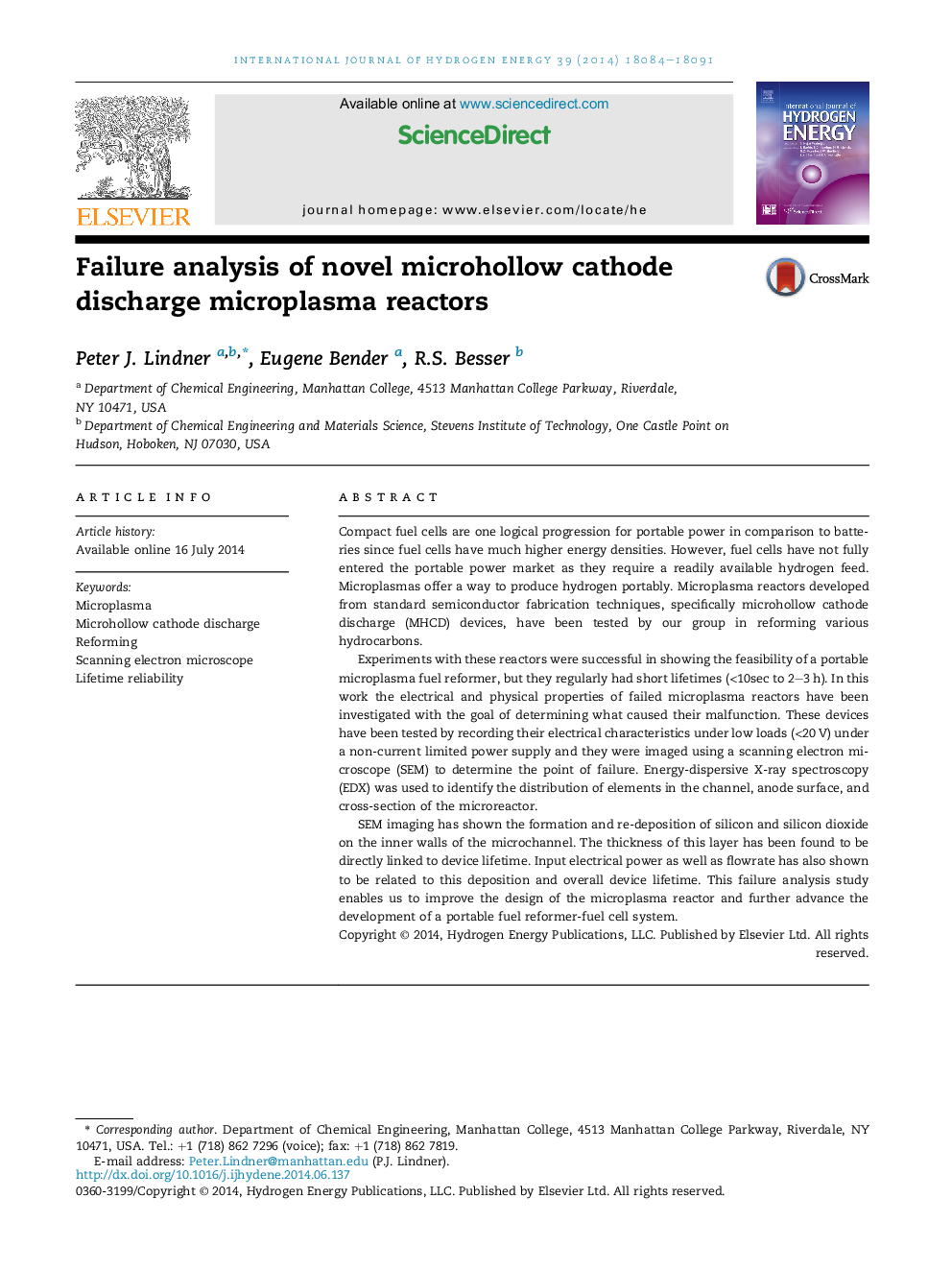| کد مقاله | کد نشریه | سال انتشار | مقاله انگلیسی | نسخه تمام متن |
|---|---|---|---|---|
| 1271905 | 1497478 | 2014 | 8 صفحه PDF | دانلود رایگان |
• We examined novel microplasma reactors after failure to understand why they failed.
• SEM and EDX analysis revealed links to device degradation.
• Silicon build up within MEMS reactor was connected to device lifetime.
• Physical degradation of the MEMS reactors was compared to electrical power and flowrate.
Compact fuel cells are one logical progression for portable power in comparison to batteries since fuel cells have much higher energy densities. However, fuel cells have not fully entered the portable power market as they require a readily available hydrogen feed. Microplasmas offer a way to produce hydrogen portably. Microplasma reactors developed from standard semiconductor fabrication techniques, specifically microhollow cathode discharge (MHCD) devices, have been tested by our group in reforming various hydrocarbons.Experiments with these reactors were successful in showing the feasibility of a portable microplasma fuel reformer, but they regularly had short lifetimes (<10sec to 2–3 h). In this work the electrical and physical properties of failed microplasma reactors have been investigated with the goal of determining what caused their malfunction. These devices have been tested by recording their electrical characteristics under low loads (<20 V) under a non-current limited power supply and they were imaged using a scanning electron microscope (SEM) to determine the point of failure. Energy-dispersive X-ray spectroscopy (EDX) was used to identify the distribution of elements in the channel, anode surface, and cross-section of the microreactor.SEM imaging has shown the formation and re-deposition of silicon and silicon dioxide on the inner walls of the microchannel. The thickness of this layer has been found to be directly linked to device lifetime. Input electrical power as well as flowrate has also shown to be related to this deposition and overall device lifetime. This failure analysis study enables us to improve the design of the microplasma reactor and further advance the development of a portable fuel reformer-fuel cell system.
Journal: International Journal of Hydrogen Energy - Volume 39, Issue 31, 22 October 2014, Pages 18084–18091
